Nakayama is in between Narita And Haneda International Airport
<クッキーについての同意並び欧州居住者向けプライバシーポリシー>
中山・下総・散歩道
Gojyu-no-to In Nakayama Hokekyo-ji (The Five Stories Pagoda )
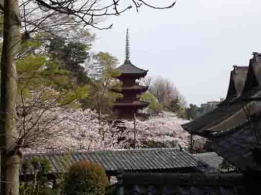
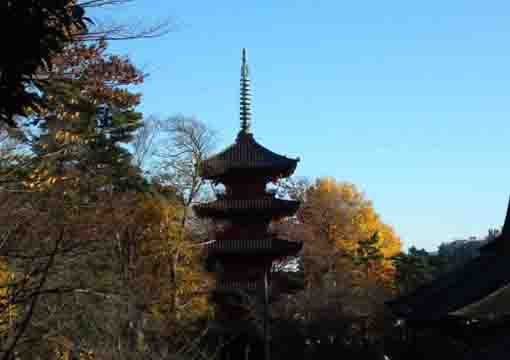
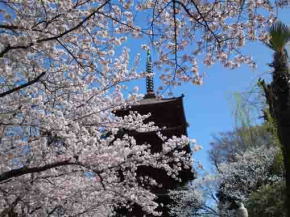
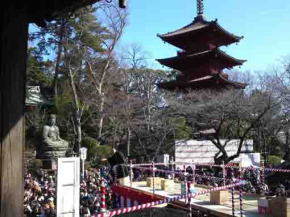
Passing through the Niomon Gate and going down the approach of Nakayama Hokekyoji Temple, visitors could find a five-story pagoda that is the symbol of Nakayama Hokekyoji Temple. It is called Hokekyoji Gojunoto designated as the Important Cultural Property designated the National Government. This pagoda was built by much donation by the Maeda Family, a famous sengoku daimyo in Kaga province (Ishikawaken), in early Edo period. In spring, the gojunoto is decorated by the millions of cherry blossoms around it and visitors enjoy amazingly seeing it and the pagoda stands strongly like competing their heights with the giant ginkgo trees in the temple.
Why don't you visit Nakayama Hokekyoji Temple?
The Five Stories Pagoda is the Important Cultural Property
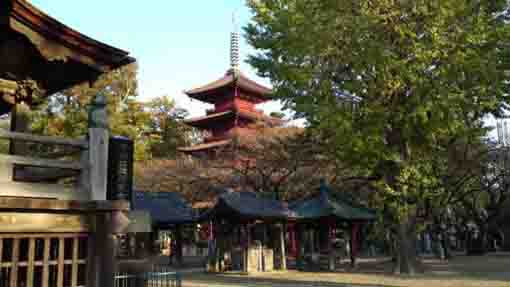
Hokekyoji Gojunoto (the Hokekyoji Five-Story Pagoda); The Important Cultural Property Designated By The Nnational Governmet
Date of designation; Taisho 5th of May 28th (1916).Date of construction;Genna 8th in early Edo Period (1622).
Architectural structure; 3 ken (5.46 meters wide) of five folds of toba tile stick copper thatching the roof with shingles.
This five-story pagoda in Nakayama Hokekyoji Temple was built for praying for the reposes of Koshitsu Honami's parents' souls, Koshitsu got the support of Toshimitsu Maeda, the lord of Kaga, the second largest daimyo in Edo Period. The height is about 30 meters tall, it is the typical scale pagoda built in Modern Times in Japan. There are two other pagodas built in the same period of time and designated as the important cultural properties, the five-story pagoda in Honmon-ji in Ikegami Ota-ku and in Kanei-ji in Ueno Taito-ku Toky. The five-story pagoda in Hokekyoji looks thinner than others as its eaves little stretched out.
The architectural structure is mainly Japanese style, but its on the top floor is Zenshu-yo, one of the traditional temple architectural styles in Japan. It might be changed when it was tore down and repaired in Meiji 45th (1911). And the doors on the first floor is the style of Chinese door, is called Sankara-do,setting two horizontal crosspieces, with vertical crosspieces in the center and crosspieces. The windows are called Rengo-mado window in traditional style that, some vertical lattices are set laterally arranged at equal spaces on the frame on. The center column stands on the center of the pagoda, and 4 columns called Shiten-hashira stand outside of the center column, and Zenshu-yo (zen-sect style, kara-yo or Chinese style) Shumidan that is the platform to place and enshrine Buddha in Buddhist altar is set, and the wooden statue of Shakanyorai and Tahonyorai-zazo (both are the cultural properties designated by Chiba prefecture) are placed on the platform. Inside the pagoda, the Shiten-bashira and others are solemnly painted full-color and red.
Moreover, according to Shochuzan Hokekyojishi (the history of Nakayama Hokekyoji temple), the Gojunoto was built in 1359 by the 18th abbot, the verenable Nichiji, and Edo Meisho Zue, tells that the statue of Nichiji was also dedicated in this pagoda. If they are true, there would have been a five-story pagoda before this pagoda was built.
In Showa 55 (1980), it was painted with Bengal red when the five-story pagoda was repaired.
引用・抜粋および参考
法華経寺五重塔前案内板
市川市ホームページ
正中山法華経寺誌
日蓮宗各本山名所図会
ちくま学芸文庫 新訂 江戸名所図会6
ウィッキペディア
Cherry Blossoms and the Five-Story Pagoda in The Hokekyo-ji
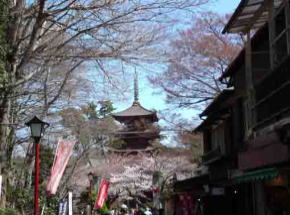
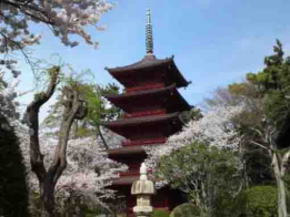
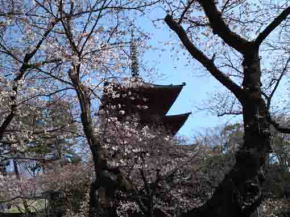
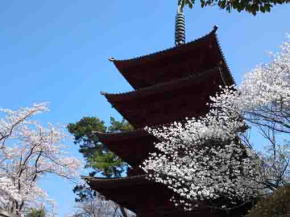
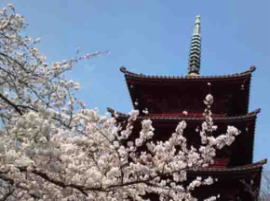
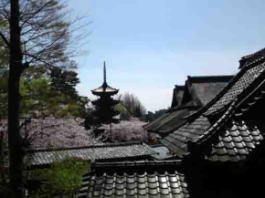
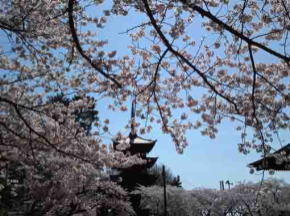
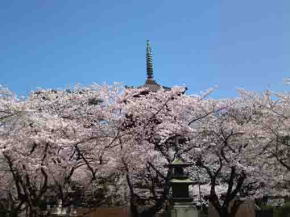
There are thousands of visitors in Spring to see the cherry blossoms in Hokekyo-ji.
The Pebble Under The Five-Stroy Pagoda in Hokekyo-ji
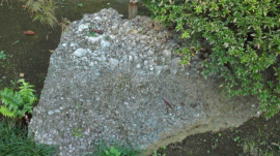
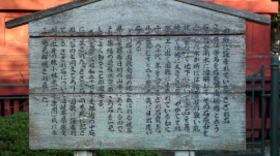
The Pabble Sung In The National Anthem Of Japan
The scientific name of this stone is called calcic psephite breccia.It dissolves, and it is rainwater with the emulsified body that the adhesive strength is sometimes strong in water including the lime, and limestone is heated underground and gathers pebbles and gradually grows big.
Thereafter it appears on the earth and it looks like the pebble in the National Anthem that will not change for thousands of years as gathering to form a rock and wearing moss forever. The meaning of the anthem is extremely graceful.
This pebble is found at the mountain side of Kasuga village Ibi-gun Gifu prefecture where the birthplace of the National Anthem, shows well the state of gathering and growing.
This report was copy of the wooden tag in the garden of the Ministry of Education, Culture, Sports, Science and Technology that was donated in Syowa 27th (1952), and the solution of the pebble in the National Anthem was discovered by Soichi Kobayashi (Sokan) from Ibikawa village of Gifu Prefecture.
From the wooden tag under the five-story pagoda in Hokekyo-ji Temple
The Location and Access to Gojunoto In Nakayama Hokekyoji
Gojunoto In Nakayama Hokekyoji Temple
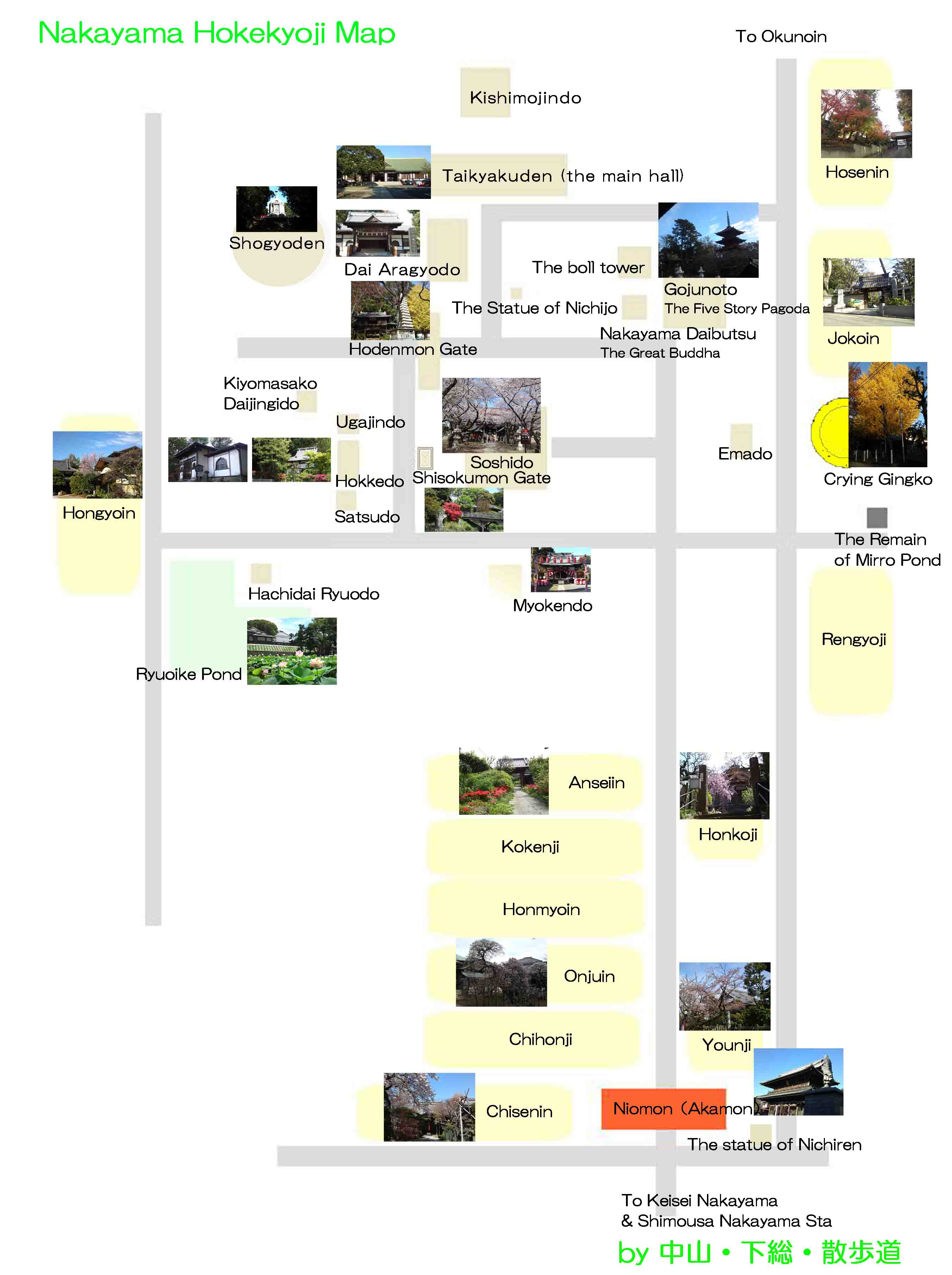
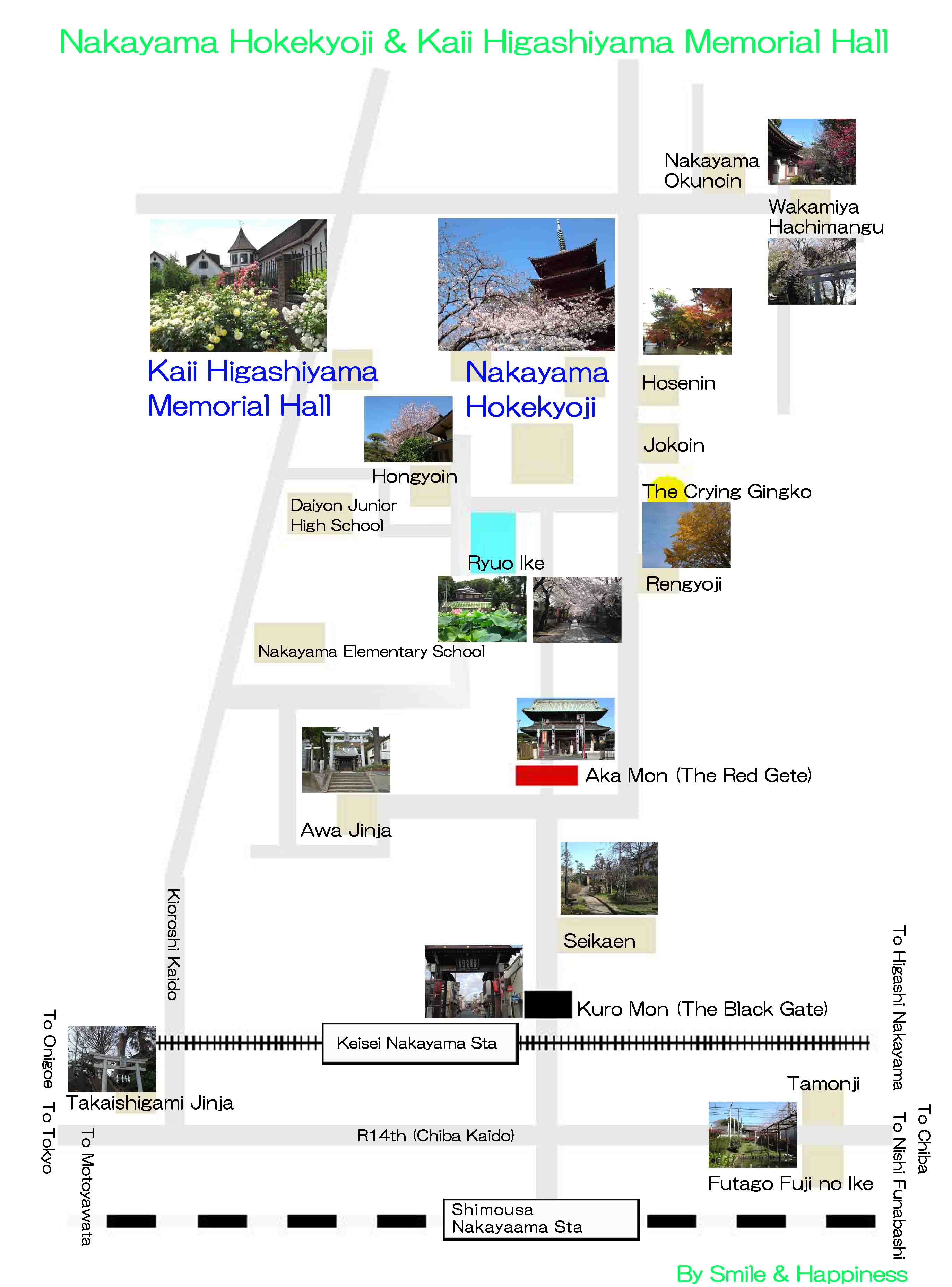
The map near Nakayama Hokekyoji and Kaii Higashiyama Memorial Hall
PDF of the map near Hokekyoji and Kaii Higashiyama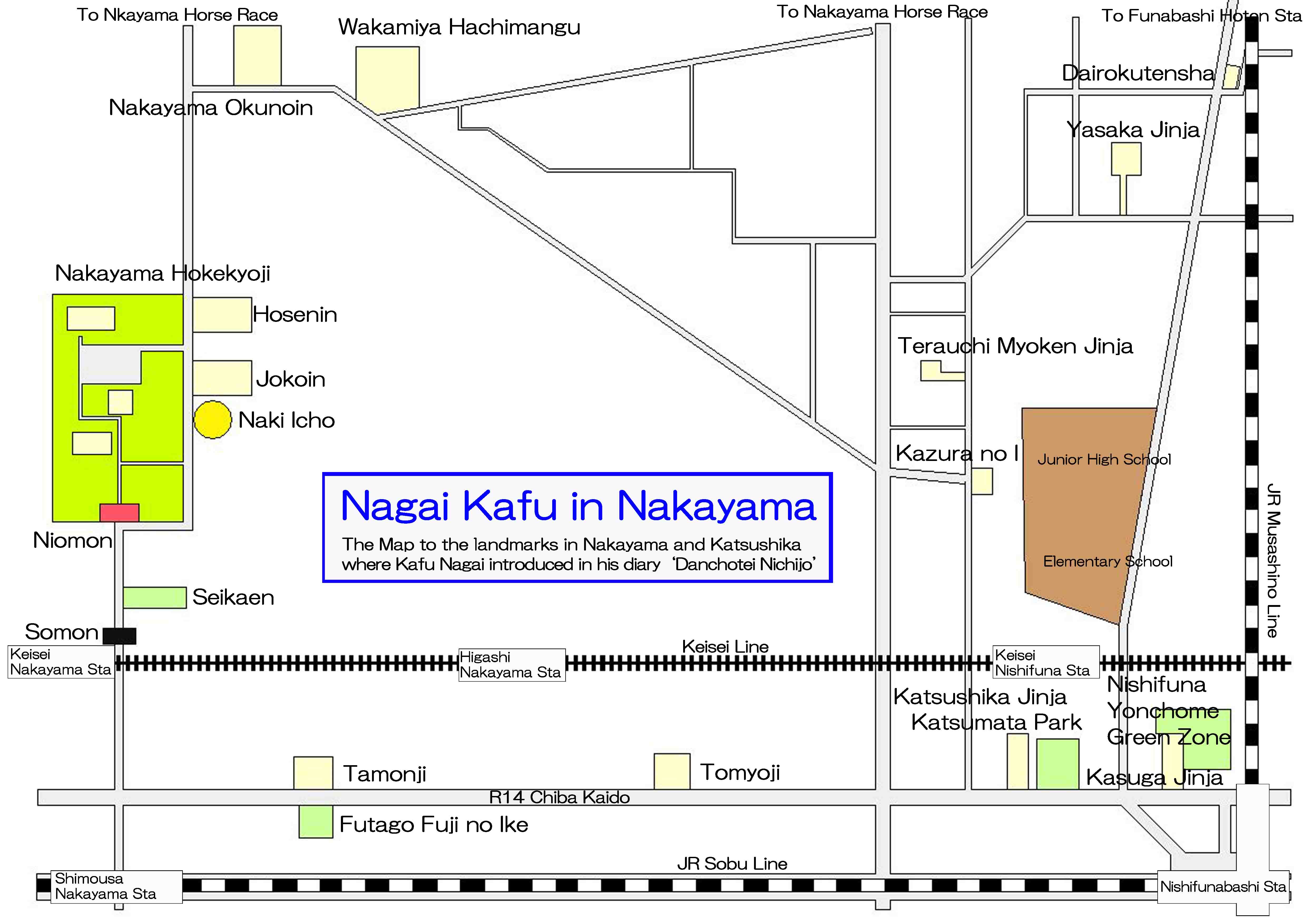
The map to the landmarks where Kafu Nagai introduced in his book
PDF of the map of the noted spots where Kafu Nagai visited- The five-story pagoda in Nakayama Hokekyouji Temple has great accessibilities from both Narita and Haneda International Airport.
- From Narita International Airport, take Keisei-line and get off Keisei-Nakayama Sta, take minimally 40 minutes from Narita Airport.. And also take JR Sobu-express line, transfer the line at Funabashi to Sobu-Local line, get off Shimousa-Nakayama Sta.
- From Haneda International Airport, take Keikyu-line bound to Narita, and get off Keisei-Nakayama Sta.
- From Tokyo Sta, take Sobu-Express line bound to Chiba or Narita, transfer the line to Sobu-Local line bound to Chiba, Tsudanuma, or Nishi-Funabashi at Ichikawa Sta, get off Shimousa-Nakayama Sta.
- From Akihabara Sta, take Sobu line bound to Chiba, get off Shimousa-Nakayama Sta.
- Take 4 minute walk from Keisei-Nakayama Sta, and take 7 minutes walk from Shimousa-Nakayama Sta.
- 2-10-1 Nakayama, Ichikawa-shi, Chiba-pref, Japan
Slide Show Movies of Sakura Blossoms in Nakayama Hokekyoji Temple
The Photo Movie of Cherry Blossoms in Nakayama Hokekyoji in 2020
The Photo Movie of Cherry Blossoms in Nakayama Hokekyoji in 2019
Let's enjoy viewing Sakura Blossoms in Nakayama Hokekyoji!
Sightseeing in Nakayama Shomousa With Mangas
Sightseeing in Nakayama Hokekyoji Temple with Manga (Long Version)
Sightseeing in Nakayama Hokekyoji Temple with Manga (Short Version)
The Landmarks in Nakayama Hokekyouji Temple
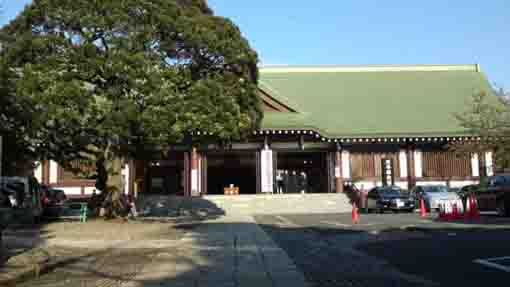
Honin(Taikyakuden)・Kishibojindo(Sonshindo)
Takikyakuden is the main hall of Hokekyoji and it has the business office and Kishibojindo Hall dedicated to the goddess of children on the end of the long corrido of the main hall.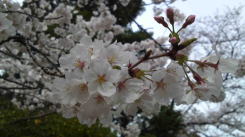
The Four Seasons In Hokekyoji
In spring, there is millions of cherry blossoms in Hokekyoji and in summer, lotus blooms on ryuo-ike pond. In fall, there are beautiful colored leaves. Every season, visitors could enjoy seeing the sights.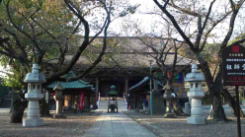
Soshido(Daido), the nationally important cultural property
It is characterized the twin hip-and-gable roof structure (hiyoku-irimoya-style), and hengaku written by Koetsu Honami hangs in front.
Goju-no-to (the five-story pagoda) , the nationally important cultural property
It was built in early Edo period (1622) by request of Koshitsu Honami supported by Maeda Family in Kaga.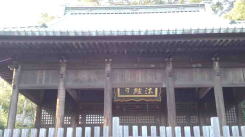
Hokke-do(the nationally important cultural property)
It was built in Kamakura period.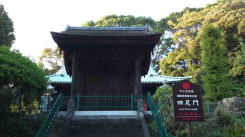
Yon-soku-mon (the nationally important cultural property)
It was moved from Aizen-dou in Kamakura 700 years ago.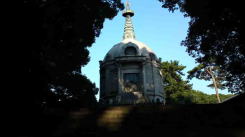
Shougyoden (the treasure hall)
It was designed by the famous architect Chuta Ito, it stores many scripts written by the Founder Nichiren.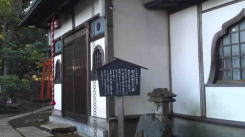
Shogan-jyoujyu-kigan-do (kiyomasa-kou-dai-zingi-do)
It enshrines Kiyomasa Kato, one of the most famous daimyo in Sengoku period.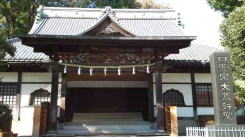
Aragyodo Hall (the hall where Buddhiist priests practice for 100 days in winter severly)
From Nov 1 to Feb 10, hundreds of Buddhist priests practice severly every year.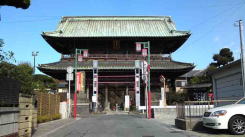
The Nio-mon Gate (The Deva Gate)
The henguku hunged in front of the gate was written by Koetsu Honami, famous artist in Momoyama Period.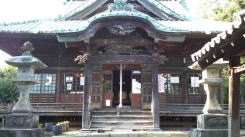
Setsu-do
It was built for worshipping Jurasetsunyo, Kishibozin, Daikokusama.
Black Gate(a tangible cultural asset by Ichikawa City)
It is also called Sou-mon (the main gate).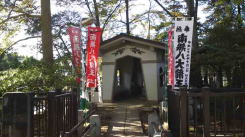
Hachidai-ryuo-do
The founder Nichiren built the small shrine to dedicate the dragon god to pray for rain.
Ugazin-do
It enshrins Ugazin who is the guardian deity of Hokekyou-ji Temple.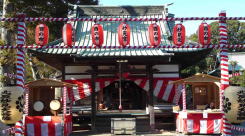
Myouken-do
It dedicates Hokushin Myouken Star that the Chiba Family deeply believed in, Hokekyoji traditionally succeeds. In November, Tori-no-ich is held in the site to dedicate the star.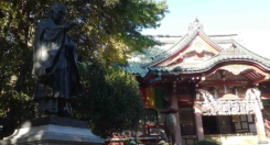
Oku-no-in (the first place where Nichren had preached at)
The founder Nichiren preached first time at the Toki's castle called Wkakamiya Yakata. And Toki built a temple 'Hokkeji', it is the origin of Oku no In.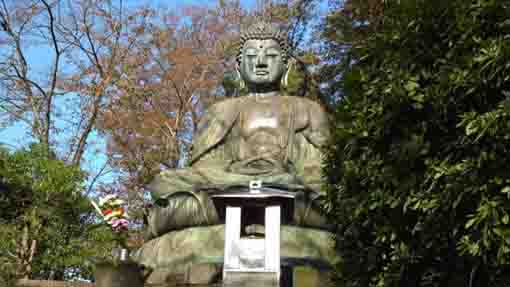
The Great Buddha(The Seated Statue of Shaka Nyorai)
It was built in 1719 by famous caster Ota Suruga-no-kami in Kanda. It is the bigest great Buddha in Chiba prefecture.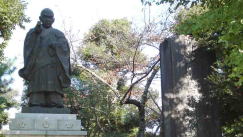
The statue of Nichijo and Naki-Icho
Nichijo was the first abbot of Nakayama Hokekyoji Temple and Naki Icho is a gingko tree having a sad legend.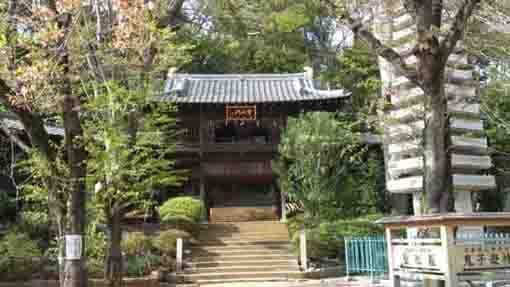
Kagami-ike-ato (the remain of the pond like a mirror), Emado hall, Hoden-mon gate, Ryuenkyo bridge
There are some other landmarks in Nakayama Hokekyoji Temple.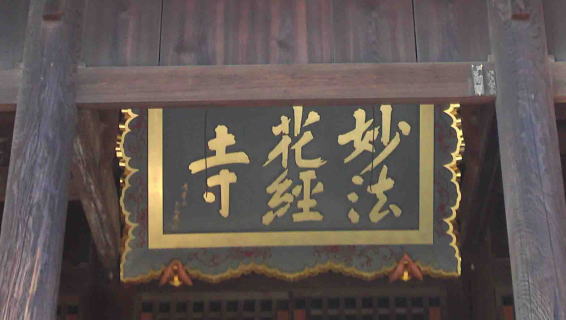
The artists, poets and writers related to Hokekyoji Temple
Koetsu Honami specially remained his calligraphy in Hokekyo-ji Temple, and Shiki Masaoka, Kafu Nagai discribed it well.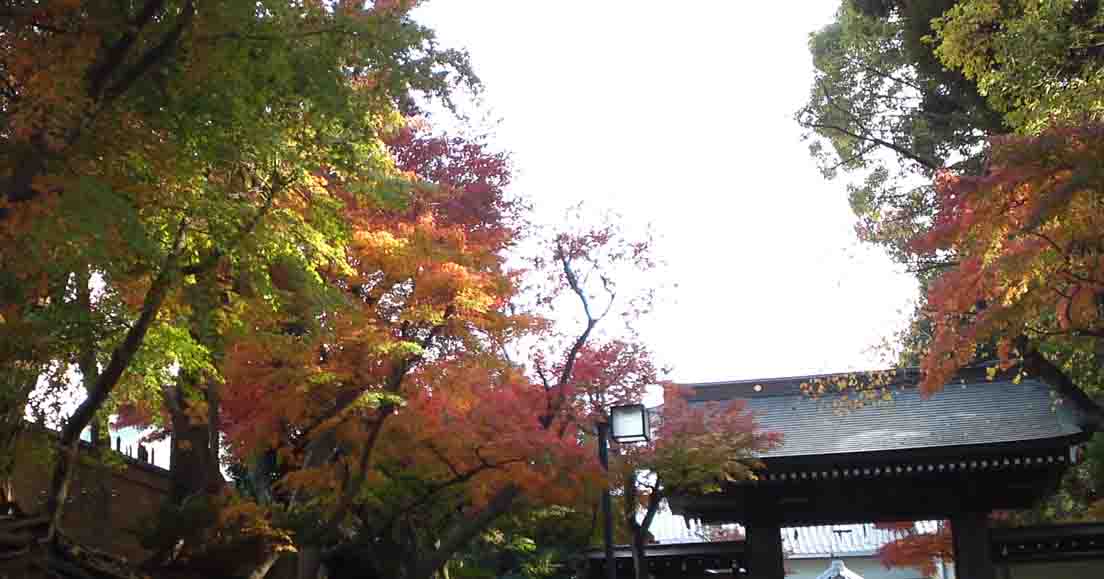
The Tacchu Temples and the Branch Temples in and around Nakayama Hokekyoji Temple
Some tacchue temples are introduced in this page.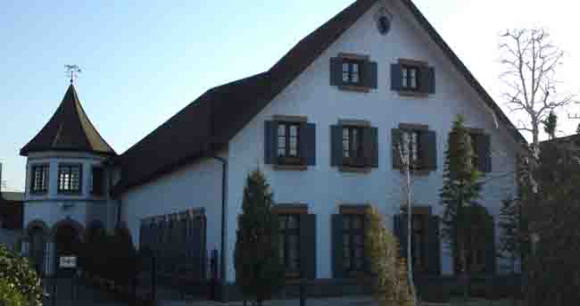
A Walk on the the area around Nakayama Hokekyoji Temple
There are some noted spots, Kaii Higashiyama Memorial Hall and so on, near Hokekyoji.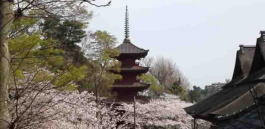
The Popular Viewing Sakura Spot / Nakayama Hokekyoji Temple
Cherry blossoms in Hokekyoji are amazingly wonderful.- 広告 Advertisement -
